Fall Lawn Care Checklist for Little Rock, AR
BY KIMBERLY MAGERL | APRIL 3RD, 2023 | ARKANSAS, LAWN CARE, LITTLE ROCKThe weather is milder, you’ve dug your sweater out of the closet just in case, and you’re ready to watch your beloved Razorbacks on TV, but your yard needs TLC. It is easy to mow your lawn and call it a day. However, successful spring lawn care begins in the fall, and September is the most important month for fertilizer. Follow our fall lawn care checklist to maintain your lawn and prepare it for the winter playoff season.
In this article, we’ll cover:
- What Are the Benefits of Fall Lawn Care?
- Fall Lawn Care Checklist for Little Rock
- FAQ About Fall Lawn Care in Little Rock
What Are the Benefits of Fall Lawn Care?
Proper fall lawn care from September through November sets the foundation for your landscape during the winter months and spring green-up. Proper maintenance during these cool transition months helps your lawn grow deeper, stronger roots.
Fall lawn care in Little Rock is more than simple mowing. As your yard prepares for the short, cold Arkansas winter, you need to set it up for success with fertilizer, weed control, and consistent mowing. With the proper fall maintenance plan, your yard will be ready to withstand the cold.
Fall lawn care benefits include:
- Stronger, deeper roots
- Easier spring green-up process
- Increased natural weed control
- Protect your lawn from disease
Fall Lawn Care Checklist for Little Rock
1. Aerate Your Turfgrass
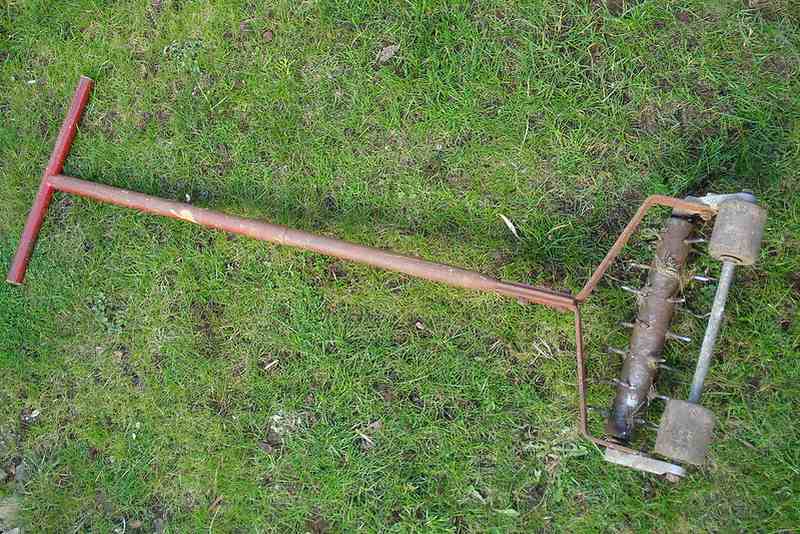
Photo Credit: allispossible.org.uk / Flickr / CC BY 2.0
Dense and nutrientless clay soils dominate in Central Arkansas, and the dry, hot summers lead to compaction. Aeration is a common lawn method to introduce oxygen back into struggling lawns and reduce compaction.
Both high summer temperatures and aeration stress your turfgrass, so the milder temperatures in September make the beginning of fall the perfect time to perform aeration on your Little Rock lawn. The process allows water and fertilizer to penetrate the soil more easily, increasing the strength and depth of your lawn’s root system. There are two types of common aeration: core aeration and spike aeration.
Core Aeration
A core aerator punches into the ground, removing plugs of soil to create small holes so the soil can breathe. Unfortunately, this method leaves leftover soil plugs on the surface of your lawn. While these plugs are an eyesore, it’s important to leave them on the surface to break down naturally. They contain beneficial nutrients and microorganisms to help reduce thatch.
Core aeration is the best method for clay soils. These aerators do a better job of breaking through compacted soil to improve nutrient access.
Spike Aeration
Spike aeration is less effective on severely compacted soils. Spike aerators punch small holes in the ground. This method does not remove material from the soil, so there is no loss of aesthetic appeal.
2. Test Your Soil

Photo Credit: Galeanu Mihai / Canva Pro / License
Early fall is one of the best times to test your soil to ensure it has all the nutrients it needs to thrive. Little Rock soils are notoriously nutrient deficient, so it is important to understand exactly what nutrients your grass is lacking. Arkansas homeowners can send in a soil sample for free soil testing.
Simply send in a core sample to receive your results detailing amendments you can make to improve your soil. Common amendments include nitrogen, phosphorus, and potassium applications and lime for soil pH imbalances.
3. Apply Fertilizer
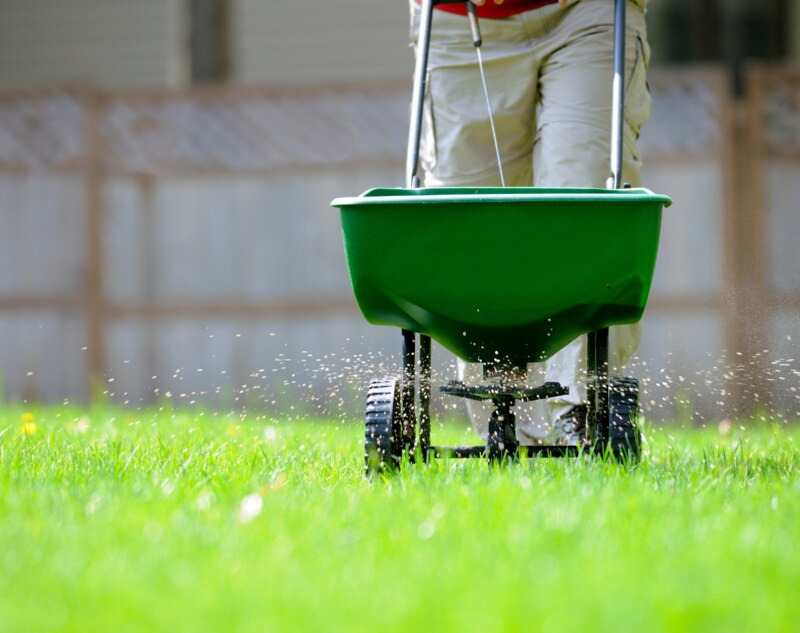
Photo Credit: groveb / Canva Pro / License
A fall fertilizer application promotes deep roots and sets your grass up for success during its future spring green-up. Unfortunately, too much of a good thing can harm your landscape, so it is important to start with a soil test first.
The best time to apply fertilizer is in September, while the Arkansas weather is still mild. The best type of fertilizer for your lawn depends on your variety of turfgrass and your unique soil sample test results.
Fertilizer comprises three primary nutrients: nitrogen (N), phosphorus (P), and potassium (K). Labels have three numbers, such as 5-10-5, which means the fertilizer contains 5% nitrogen, 10% phosphorus, and 5% potassium. Select a fertilizer ratio to satisfy your soil test results.
Bermudagrass
Fertilize your lawn with 0.5 pound of nitrogen per 1,000 square feet of lawn in September, six weeks before expected frost. Pay attention to the potassium needs on your soil test results and select a low-nitrogen, high-potassium blend if needed.
St. Augustinegrass, Centipedegrass, and Zoysiagrass
Never apply nitrogen to St. Augustinegrass, centipedegrass, or Zoysiagrass in the fall. High nitrogen rates increase winter weeds and new growth, which fights against the naturally slowing growth of these turfgrasses as they prepare for winter dormancy. Apply potassium if your soil test recommends it.
4. Apply Lime
Lime is a fall soil amendment like fertilizer composed of limestone rock ground into powder. It contains calcium carbonate and magnesium carbonate. The addition of lime to your turfgrass increases nutrients and soil alkalinity, spreading beneficial bacteria. The ideal pH for your soil depends on the type of turfgrass in your landscape.
| Grass Type | Ideal pH Range |
| Bermudagrass | 6.0 – 6.5 |
| Centipedegrass | 5.0 – 6.0 |
| St. Augustinegrass | 6.0 – 6.5 |
| Zoysiagrass | 6.0 – 6.5 |
Bermudagrass, St. Augustinegrass, and Zoysiagrass
Apply lime in September, October, or November if your soil test recommends it.
Centipedegrass
Apply lime during the fall months only if your soil test shows a pH of less than 5.0.
5. Mow Frequently
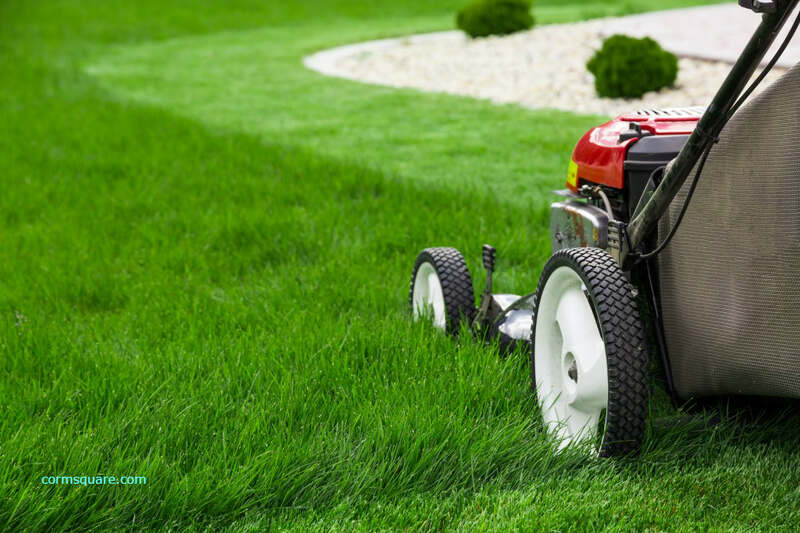
Photo Credit: Prasannanossam3 / Wikimedia Commons / CC BY-SA 4.0
Little Rock’s subtropical climate and four distinct seasons make for interesting weather, especially in the fall. The city’s autumns are mild with a 45% chance of cloud cover and give way to short, wet, and cold winters. Your grass variety determines your unique mowing schedule and lawn height.
Unfortunately, it is tempting to mow your lawn short and make less work for yourself, but most grass types grow best at higher heights in Arkansas. Cutting your grass short leaves it vulnerable to injury, weeds, and drought stress. Taller grass blades develop deeper roots, setting your lawn up for winter success and a better spring green-up.
All Warm-Season Varieties
Unless your lawn is drought-stressed, continue mowing your lawn until October. To avoid injuring your lawn, never mow low or scalp your lawn in the fall, and never remove more than ⅓ of the leaf blade.
You should mow every five to seven days within the recommended range for your grass type. Do not collect clippings unless you see large clumps on your lawn. Always aim to cut less, more often.
| Grass Type | Recommended Mowing Height |
| Bermudagrass | 0.5 – 2.5 inches |
| Centipedegrass | 1.5 – 2 inches |
| St. Augustinegrass | 2.5 – 4 inches |
| Zoysiagrass | 0.75 – 2.5 inches |
6. Water Sparingly
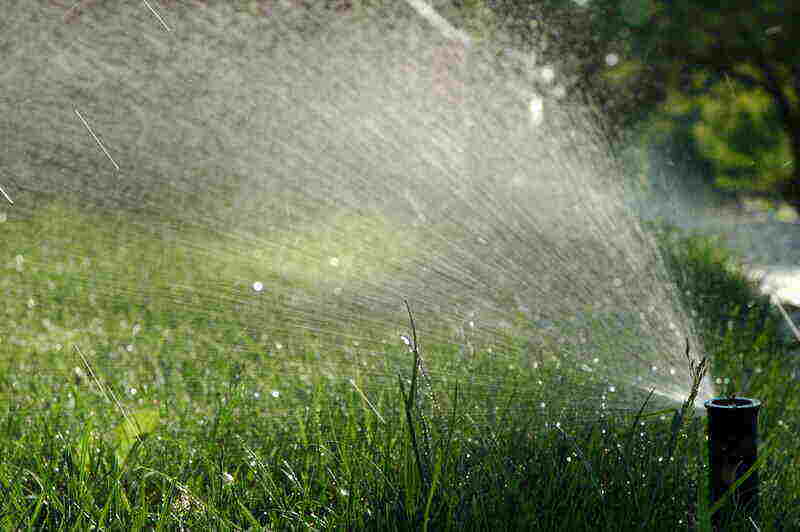
Photo Credit: UBC Micrometeorology / Flickr / CC BY 2.0
No matter what variety of turfgrass your lawn has, Little Rock lawns seldom need irrigating in the fall unless it is brand new. September, October, and November have an average of seven to nine rainy days each in Arkansas, eliminating the need for most supplemental irrigation.
If hot, dry, or windy conditions occur for an extended period, continue a watering regimen until October, aiming for 1 inch of water per week for all varieties. Your lawn needs water if you notice a dark blue-gray color, foot-printing, or wilted, folded, or curled leaves.
7. Treat Lawn Disease
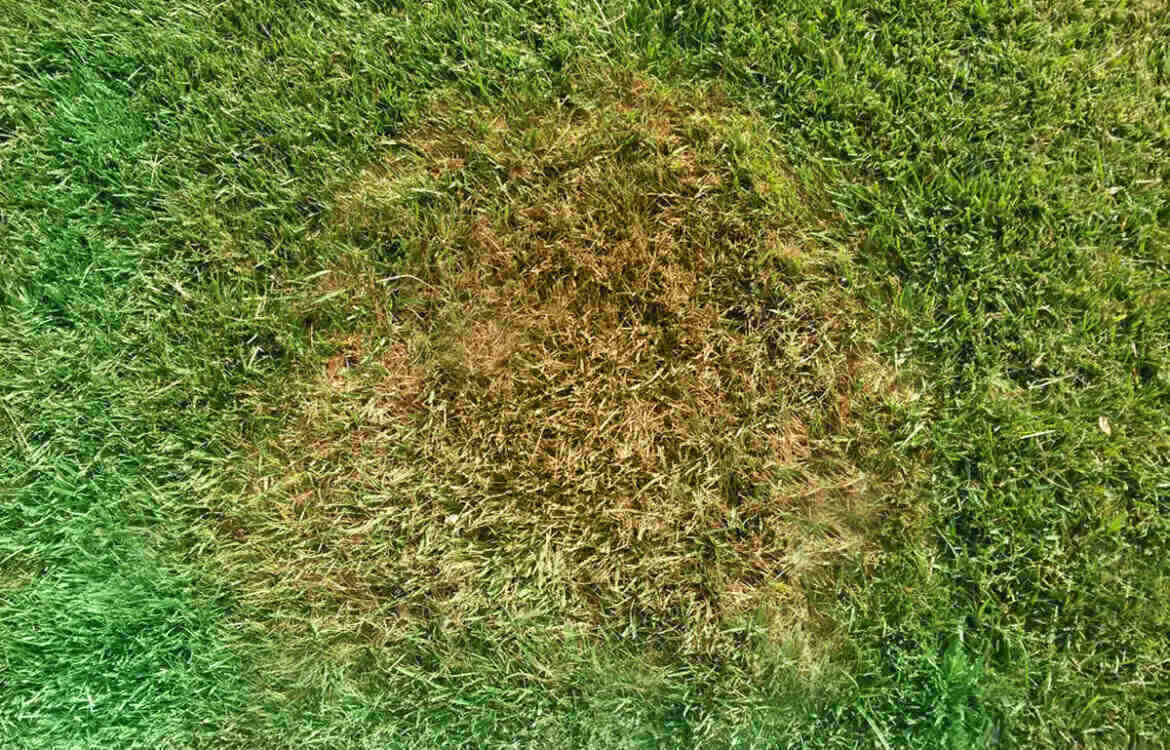
Photo Credit: Scot Nelson / Flickr / CC0 1.0
Your best defense against lawn disease is routine maintenance, including watering, fertilization, and proper mowing heights. Arkansas’ mild fall temperatures and subtropical climate create the perfect environment for lawn diseases and fungi, including large patch and spring dead spot.
Large Patch
Large patch is a fungus that appears as brown, circular patches several feet in diameter. This disease affects St. Augustinegrass, Zoysiagrass, and centipedegrass. It does not respond well to fungicides. The most effective control and prevention method is proper lawn maintenance.
Monitor patches and improve drainage and air movement. Limit fertilization in affected areas and avoid over-watering.
Spring Dead Spot
Spring dead spot is not just a spring problem. It is another soil-dwelling fungus affecting bermudagrass in the Southeast. In spring, it appears as circular patches of dead grass ranging in diameter from 6 inches to several feet, and the easiest way to spot it is to monitor your lawn during its active green-up phase as affected areas will not go through the green-up process.
In the fall, spring dead spot is invisible but still active, especially if your lawn has a history of the fungus. Treat suspected spring dead spot in the fall with a preventative application of fungicide in September, October, or November.
8. Control Weeds
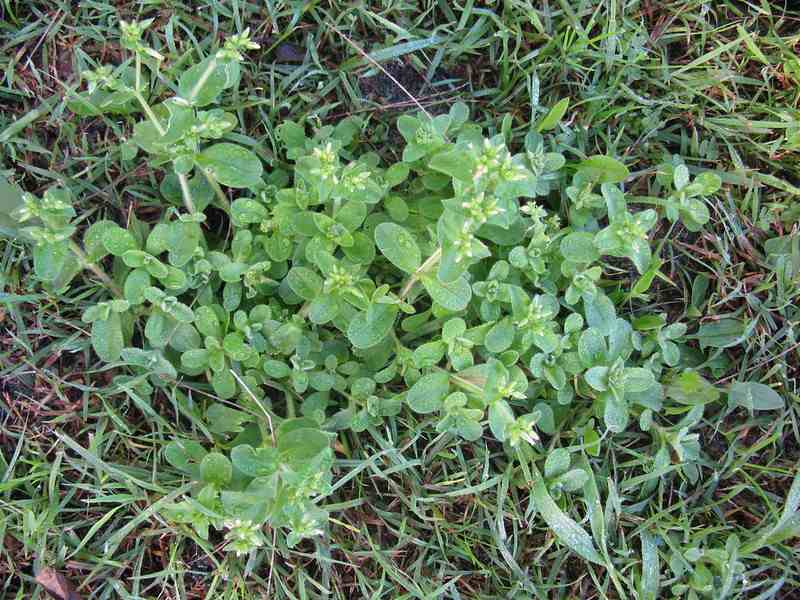
Photo Credit: Harry Rose / Flickr / CC BY 2.0
Weeds love Little Rock’s subtropical climate. These pests signify an underlying problem with your lawn’s health, including low-nitrogen levels, imbalanced pH, and thinning turf. Weeds siphon vital nutrients, water, and sunlight from your turfgrass and spread pests and diseases. Two common methods of weed control include post-emergent and pre-emergent herbicides.
Pre-Emergent Herbicides for Zoysiagrass
Unlike other warm-season grasses, Zoysiagrass benefits from a fall application of pre-emergent herbicide designed to kill seeds before germination. While this herbicide will not control existing perennial weeds, it will help control the emergence of new winter annual and perennial broadleaf weeds.
Post-Emergent Herbicides for Winter Broadleaf Weeds
Post-emergent herbicides disrupt the growth of winter broadleaf weeds that become a nuisance during Little Rock falls. Always apply the herbicide directly to the active weed. Wait 30 days between applications, and never apply more than two applications per year.
Common winter broadleaf weeds in Little Rock:
- Hairy Bittercress (Cardamine hirsute)
- Small Flowered Buttercup (Ranunculus)
- Chickweed (Stellaria media)
- White Clover (Trifolium repens)
- Purple Cudweed (Gnaphalium purpureum)
- Dandelion (Taraxacum officinale)
- Field Madder (Sherardia arvensis)
- Carolina Geranium (Geranium carolinianum)
- Henbit (Lamium amplexicaule)
- Cutleaf Evening Primrose (Oenothera laciniata)
- Shepherd’s Purse (Capsella bursa-pastoris)
- Corn Speedwell (Veronica arvensis)
9. Rake Leaves
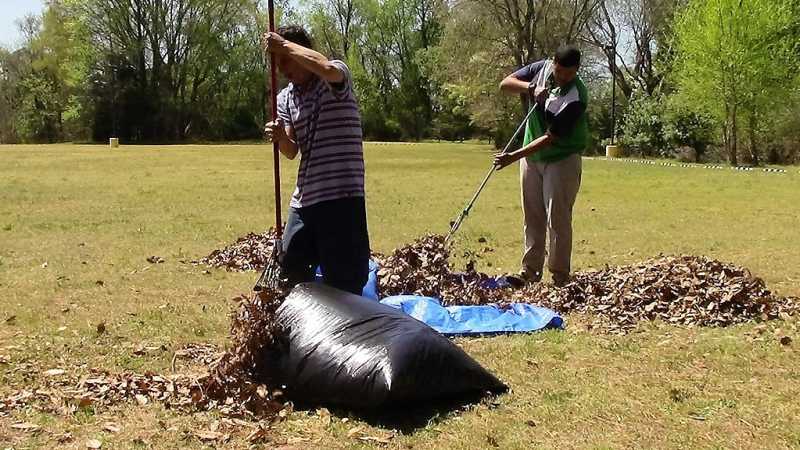
Photo Credit: Bigmouth1 / Wikimedia Commons / CC BY-SA 4.0
Locations with four seasons like Little Rock attract many homeowners with promises of warm summers, changing fall foliage, and a white Christmas. Watching leaves change from green to autumn gold, bronze, and red is something to look forward to as you sip your pumpkin spice latte and gear up for Friday night football. Unfortunately, the colorful leaves drop to the ground, creating a fluffy and crunchy layer over your lawn.
Leaves block out sun, trap moisture, reduce airflow, and lead to dead spots of turfgrass. They increase pest problems and spread disease, so be sure to remove them as soon as possible. Wait until the leaves are dry to rake and prepare to rake your lawn before the first frost or snow of late autumn. The important thing is removing the leaves and layer of thatch left behind. It does not matter if you rake as your leaves fall or wait until all of the leaves in your yard have fallen.
FAQ About Fall Lawn Care in Little Rock
Most homeowners can stop mowing their Little Rock lawns in October after the first frost.
Your warm-season turfgrass will go dormant during the end of fall and the beginning of winter. It will dry out and turn brown. The best way to determine if your grass is dormant is by pulling on it. If the grass comes out of the ground easily, it is likely dead. However, if there is resistance from deep roots when you pull on your grass, it is dormant.
No. While some homeowners overseed their warm-season grass with perennial ryegrass to maintain a year-round green lawn, it is not recommended for healthy warm-season turfgrass. The ryegrass slows spring green-up, competing with your warm-season turfgrass and stealing vital nutrients.
Get Help With Your Fall Lawn Maintenance
Mild fall weather creates a prime environment for routine yard work that will set your lawn up to take on the harsh Arkansas winter and prepare it for a better green-up in the spring. Be sure to check out our spring lawn care tips to get a jump start on what you can expect from your long-term maintenance plan.
If you are short on time and would rather watch football or decorate for Halloween, contact a Little Rock lawn care pro to help your lawn establish deep roots so it can survive the winter.
Main Photo Credit: Jeffries House, North Little Rock, AR / Valis55 / Wikimedia Commons / CC BY-SA 3.0